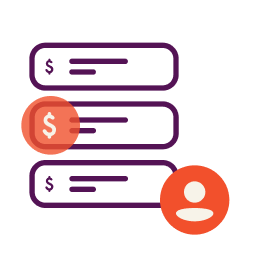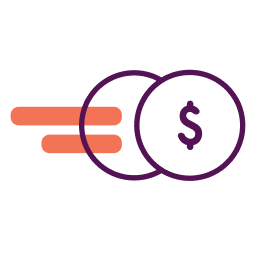Most businesses need the right equipment to be successful. Commercial equipment—whether that’s an industrial mixer for a bakery, computers for an accounting firm, or a fleet of trucks for a delivery service—can help optimize performance and take a business to the next level.
The problem is…equipment is expensive, particularly if you need the latest and greatest technology.
Thankfully, an equipment lease may be able to help you get the specialized machinery or technology your company needs now, even if you don’t have all the money you need to buy the equipment outright. Leasing equipment is also a great alternative to equipment financing loans if you don’t qualify or aren’t interested in small business loans.
What is an Equipment Lease?
Essentially, leasing can be viewed as an alternative small business financing option. It’s a way to help you get the equipment your business needs now with lower monthly payments or less money out of your pocket on up front.
Leasing transactions involve a contract between a lessor (usually equipment dealers or financial firms who specialize in leases) and a lessee (that’s you). The lessor buys the equipment outright from the manufacturer. (Some manufacturers also offer leases.) As the lessee, you’re allowed to use the equipment for a period of time, provided you hold up your end of the bargain and make your agreed-upon monthly payments on time to the lessor.
Depending on the type of lease, once the lease is up, you may surrender the equipment back to the lessor, or you may have the option to buy the equipment. In other words, a lease may be more like a rental agreement where you are renting the equipment with the option to buy it, or more like an installment purchase where you will buy the equipment at the end of the lease period.
Of course, every lease is different, but it’s not unusual to find companies willing to offer two- to five-year leases with interest rates in the 8.5%-20% range. Your exact rate and terms will vary depending upon your credit, the type of equipment you’re seeking to lease, and even your business’ industry. You’ll generally need a decent personal credit score to qualify for the most attractive rates and terms.
Some types of equipment you might be able to secure with an equipment lease include:
- Computers
- Printers
- Vehicles
- Furniture
- Heavy equipment
- Medical equipment
- Specialized equipment
- Restaurant equipment
Benefits of Leasing
The biggest reason small business owners consider leasing equipment is the lower initial expense. Rather than making a down payment for expensive equipment, you simply start making your monthly payments after the lease starts. It can be helpful for acquiring new equipment without a large outlay of cash.
You may also benefit from tax deductions on your lease payments, as we’ll discuss shortly, which helps you save more money.
Because the equipment serves as collateral for the financing, it may be easier to qualify than trying to get a loan from a bank or other financing source.
And finally, because a lot of equipment quickly becomes outdated, thanks to rapidly-improving technology, leasing can ensure you have the latest upgrade without being saddled with trying to sell equipment that is past its prime.
How Equipment Leasing Can Improve Cash Flow for Your Business
When you need a new, expensive piece of equipment, buying it outright can put a serious strain on your business’ cash flow. Using a large portion of your available working capital means that you will no longer have access to that money when other expenses arise, as they inevitably do in any business.
However, you can preserve your company cash flow by using an operating lease to secure the equipment instead. Leasing solutions can help you both preserve cash flow and grow your business with the equipment you need.
Remember, good cash flow can often be the difference between business success and business failure. It sounds dramatic, but it’s true. Many businesses have experienced disaster due to cash flow challenges they failed to overcome.
Anything you can do to affordably increase your company’s cash flow may be a good idea. At the very least, if it improves cash flow and helps your balance sheet, it’s worth some serious consideration.
Understanding and Negotiating the Lease Agreement: Key Terms and Conditions
Because specialized business equipment is such an integral part of running many businesses, it’s no surprise that there are many companies lining up to provide leasing options. In fact, the world of equipment leasing is quite competitive.
There are several key terms to review in an equipment lease agreement:
- Length of lease. How long is the term of the lease? How does that match your need for the equipment, as well as the obsolescence period of the equipment?
- Payment terms. How much are the payments and how often they will be due? What is the length of the repayment period?
- Value of the equipment. What is the fair market value of the equipment? (Remember, you’ll likely need insurance in the meantime.) What is the total cost if you choose to buy the equipment at the end of the lease? What is the cost if you surrender it?
- End of lease options. What are your options when the lease ends? Will you need to take specific action to prevent the lease from automatically renewing?
- Cancellation provisions. What are your options for ending the lease early? How much will that cost?
- Taxes. Who is responsible for taxes? Certain types of equipment leases offer tax benefits (discussed later). What is the structure of the lease and how does this affect your business taxes?
- Other terms. What are you required to do to maintain the equipment? Who handles repairs? Are there restrictions on the use of the equipment?
At this point, you may be wondering how leasing companies make money. There’s actually not just one simple answer to that question. Instead, there are a number of ways for money to be made through an equipment leasing business model, including:
- Finance Charges — A leasing company might, for example, purchase a piece of equipment at 9% APR but lease it to you at 12%.
- Prepayment Penalties — A leasing company might offer you the right to get out of your contract early, but at a cost.
- Excess Use Charges — The equipment you lease will likely have usage restrictions. If you as the lessee return the equipment in poor condition or with excess mileage, you might have to pay a penalty.
- Equipment Owner Tax Benefits — Since the leasing company actually maintains ownership of the equipment, it often gets to take advantage of any owner-specific tax benefits such as depreciation
Equipment Leasing Definitions
If you’re considering leasing equipment for your company, it’s a good idea to understand several important lease structure definitions, along with the specific payment terms and fees that may be part of your lease agreement.
Capital Equipment
Technology or machinery that you need to operate your business that costs near or above $5,000 is often referred to as “capital equipment” in the equipment leasing world.
This is the type of equipment most commonly leased in the U.S., both to preserve cash flow and to avoid paying outright for equipment that’s likely to be obsolete within a few years.
Capital Lease
With a capital lease, you typically have the option to buy the equipment at the end of the lease term—sometimes for as low as $1. Capital leases generally feature longer payback terms (you pay over a longer period of time) and can’t be canceled early.
You may also be responsible for making repairs and paying insurance and tax on the equipment. Your monthly operating lease payments may be higher with this option.
True Lease
With a true lease, you typically have the option to return the equipment at the end of your lease period. However, you can also opt to purchase it or roll it over into the lease of newer equipment.
Skip Lease
A skip lease can be a good fit for businesses that are more profitable during certain seasons. During certain months, larger payments will be due. However, you can set up your payment structure so that during other, traditionally slower months, you may be able to skip payments altogether.
TRAC Lease
A TRAC lease (terminal rental adjustment clause) is specific to vehicles you use in your business, and it allows you to make adjustments to payment terms and lengths. There are no wear-and-tear mileage restrictions, so this is great if you plan on driving commercial vehicles heavily.
Synthetic Lease
This is a type of operating lease where the lessor is considered a special-purpose entity for accounting purposes. As the lessee, the asset you are leasing never appears on your balance sheet, and you can write off the expense.
Sale Leaseback
Do you own a piece of commercial equipment outright? If so, you might be able to sell it to an equipment leasing company for a lump sum to get access to working capital. However, you could then turn around and lease the equipment back from the lessor so that your business can continue to use the machinery. This is called a sale leaseback.
Monthly Payment Terms
Your lease agreement (aka contract) will lay out the terms that you have to follow to maintain the right to use the equipment. These will include financial terms like how much you have to pay each month and when those payments are due.
If you miss a due date, you may be charged a late fee and, if you fall far enough behind on your payments, the equipment might be repossessed.
Equipment Leasing and Finance Association
If you’re searching for affordable lease options for your company, you’ll probably come across one organization—the Equipment Leasing and Finance Foundation. ELFF is a non-profit organization that encourages thoughtful innovation and the general betterment of the equipment financing and leasing industry.
Credit Score Requirements for Equipment Leases
Just like with equipment loans, to qualify for an equipment lease you’ll need to satisfy the credit score requirements set forth by the equipment leasing company. In general, a higher personal credit score leads to lower rates and smaller monthly payments on your equipment lease.
In general, there are four different credit tiers that could impact your chances of approval and the cost of your operating lease, if your credit is strong enough to qualify.
| Financing Tier | Credit Score Required |
|---|---|
| A Tier | Over 700 FICO Score |
| B Tier | 680 to 700 FICO Score |
| C Tier | 620 to 680 FICO Score |
| D Tier | 520 to 630 FICO Score |
Just remember, financial institutions (like banks or credit unions), online lenders, and leasing companies have their own set of approval and pricing criteria. The tiers above can be used as a basic guideline, but they may not match exactly to the requirements you encounter with a specific bank or equipment leasing company.
Be sure to check the requirements for the institution before filling out a lease application form.
In addition to checking credit history (which may include personal credit and/or business credit scores), leasing companies will also want to confirm the business can afford the lease payments. Leasing companies may require copies of business bank statements, financial statements and/or business tax returns to verify the financial health of the business.
Tax Implications of Equipment Leasing
Not only can equipment leasing provide you with the equipment you need with affordable payments, it may provide tax benefits as well.
The type of tax benefit the business can claim depends in part on the structure of the sales agreement. The term “lease” is sometimes used to describe purchase arrangements that the IR considers to be a conditional sales contract.
According to the IRS, “if the agreement is a lease, you may deduct the payments as rent. If the agreement is a conditional sales contract, you consider yourself as the outright purchaser of the equipment. You may generally recover the cost of such property used in a trade or business through depreciation deductions.”
The Section 179 Deduction allows the business to accelerate the deduction of the purchase and write off the entire purchase price (up to the limit) immediately, instead of doing so over time.
For tax years beginning in 2023, the maximum section 179 expense deduction is $1,160,000 (total for all equipment eligible for the deduction). This limit is reduced by the amount by which the cost of section 179 property placed in service during the tax year exceeds $2,890,000.
Purchases of equipment above the limit ($1,160,000 in tax years beginning in 2023) may be eligible for bonus depreciation. Bonus depreciation is limited, though, depending on when the property is placed into service, and will eventually phase out.
- 80% for property placed in service in 2023
- 60% for property placed in service in 2024
- 40% for property placed in service in 2025
- 20% for property placed in service in 2026
- 0% for property placed in service in 2027 and later years
Bonus depreciation may be taken even if the business takes a loss, while the total amount you can deduct each year after you apply the dollar limit under Section 179 is limited to the taxable income from the active conduct of any trade or business during the year.
Learn more about the Section 179 Deduction and bonus depreciation in IRS publication 946.
Top 50 Equipment Leasing Companies
The Monitor Daily dubs itself “the independent voice of equipment finance.” Every year, the Monitor publishes several reports pertaining to the equipment financing and leasing industry in the United States. Among these reports is one entitled the Monitor Bank 50 (available for purchase).
The Monitor Bank 50 report ranks the top “bank-affiliated equipment leasing and finance companies in the U.S.” This can be helpful in your search for the best leasing company to work with.
The report measures the performance of these banks over the past 12 months, including their net asset size, new business activity, and market share. It also forecasts how the banks may continue to perform in the years to come. What the report cannot tell you is whether any of these banks may offer the right leasing option for you.
How to Choose the Right Equipment Leasing Company
Equipment leasing is offered by three types of companies:
- Equipment manufacturers and distributors
- Banks and traditional financial institutions
- Leasing companies
You may also find equipment leases through brokers who work with various leasing companies.
Each type of leasing company will have its pros and cons. Manufacturers and distributors can often offer good deals as their goal is to move product, but their goal is to get you to buy their equipment rather than a competitor’s. Banks often offer attractive terms but the application process can take a while, or they may specialize in certain types of leases. Leasing companies can vary in terms of cost and quality of service. They may be able to help businesses with unusual needs, such as finding leasing solutions for startups and other hard-to-finance businesses.
Here’s a list of a few equipment leasing companies you might want to review.
Guidant Financial
Guidant Financial can provide equipment leases valued at a minimum of $10,000. You’ll need a credit utilization of 70% or less and a 650+ credit score for an established business.
TimePayment
TimePayment offers both lease-to-own and fair market value lease solutions. Those running startups or with less-than-perfect credit may be eligible for leases.
Crest Capital
Crest Capital offers both no-hassle equipment leases and financing. You can even finance used equipment.
CIT
CIT will work with your budget and equipment needs to customize a lease or financing option for you. The company specializes in construction equipment leases for equipment like skid steers, farm equipment, and drills.
American Capital Group
American Capital Group is an option to consider if you need several pieces of heavy equipment since you can bundle multiple items together for one monthly payment.
National Funding
All you need to get started with a lease from National Funding is an equipment quote from a vendor, a FICO score of 620+, and at least 6 months in business under your belt.
Be sure to do your research and compare any offers from these companies with other equipment lease offers that may be available.
Equipment Leasing Companies for Bad Credit
As mentioned, the stronger your credit history, the easier and more affordable it will typically be to lease equipment for your company. If you try to qualify for an equipment lease when you have a poor credit rating, your options are likely to be more limited. The same goes if you want to take out an equipment loan.
With bad credit you might face any of the following consequences:
- Higher down payment
- Cosigner requirement
- Additional collateral requirement
- Higher interest rate
Keep in mind that even if you can technically qualify for a lease, providers may want you to satisfy certain other requirements as a tradeoff for having less-than-stellar credit. Some equipment leasing companies may be able to work with borrowers with low credit scores provided they have strong revenues. If you currently have credit problems, your best bet is to work on improving your credit rating as quickly as possible so that you won’t face approval problems or less attractive terms in the future. Remember, for all small business owners, strong personal credit scores can be a very valuable asset.
Equipment Leasing Calculator
It’s smart to calculate the full cost that a leasing company might charge you to spread out your payments when you’re comparing equipment leasing options—or any other types of equipment financing possibilities, for that matter.
Be sure to calculate not just the interest rate you’re being charged, but also any additional fees (e.g. origination fees, etc.).
These small business loan calculators from Nav may help to give you a better picture of what you’ll be expected to pay overall for an equipment lease.
Alternatives to Equipment Leasing
Leasing isn’t the only option to acquiring the equipment your business needs. Other alternatives include buying equipment outright, seller financing, or using equipment financing to purchase equipment and pay for it over time.
Buying Equipment Outright
If you can find a great deal on equipment— including used equipment—you may want to purchase equipment rather than leasing or financing it. Depending on the cost of equipment this can require a fairly significant amount of cash, though.
Seller Financing
You may be able to find a seller who is willing to finance your purchase of used equipment over time. This can be appealing if you are trying to buy used equipment or hard-to-finance equipment. You may need to make a down payment, but upfront costs will often be negotiable.
Equipment Financing
Another option is to get a small business loan to purchase equipment. Good credit (business and/or personal credit) may be required to qualify and rates will vary substantially depending on the type of financing. Options may include:
Lines of Credit
For short-term financing, a business line of credit can be a great option. Lines of credit allow borrowers to have access to a set credit amount and they can then borrow against that line as needed. While this won’t work for all types of equipment, a LOC could help a business owner take advantage of the opportunity to pick up a lower-cost piece of used equipment at a good price.
Term Loans
For entrepreneurs that want a loan with more time to pay it back, a term loan may be the right choice. Term loans typically require repayment over the course of 2-5 years, though some have terms as long as 20—25 years. Many term loans have fixed payments which are helpful for budgeting.
Business Credit Cards
With a built-in line of credit, many business credit cards can provide quick access to funds. One advantage over other types of business financing is the fact that many cards don’t require strong business revenues to qualify. Most small business credit cards can also help you build business credit which can be helpful for qualifying for additional financing later.
SBA Loans
The U.S. Small Business Administration has an extensive SBA loan program and many of these loans can be used for equipment financing These include 7(a) loans, which go up to $5 million, SBA Microloans which max out at $50,000 and CDC 504 loans which technically have no cap. These loans are made by lenders approved by the SBA, which provides a guarantee if the borrower defaults.
Nav’s Final Word: Equipment Leasing for Small Businesses
Depending on your equipment needs, leasing may be your best option for retaining capital if you don’t want to take out a loan. Remember, though, that as the lessee, you have certain responsibilities with that lease. You must keep the equipment in good condition. You may be required to have it regularly serviced to ensure its efficiency. If you don’t meet the criteria set forth in your lease agreement, you may be charged fees at the end of the term.
This article was originally written on June 20, 2019 and updated on July 11, 2023.




Thanks for this really thorough article. I enjoyed reading it and I will make good use of it.
Thanks for sharing the information this will really helpful for me